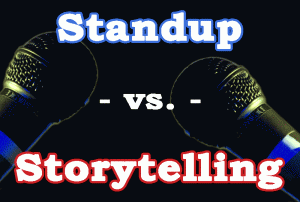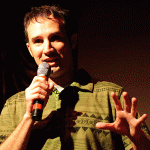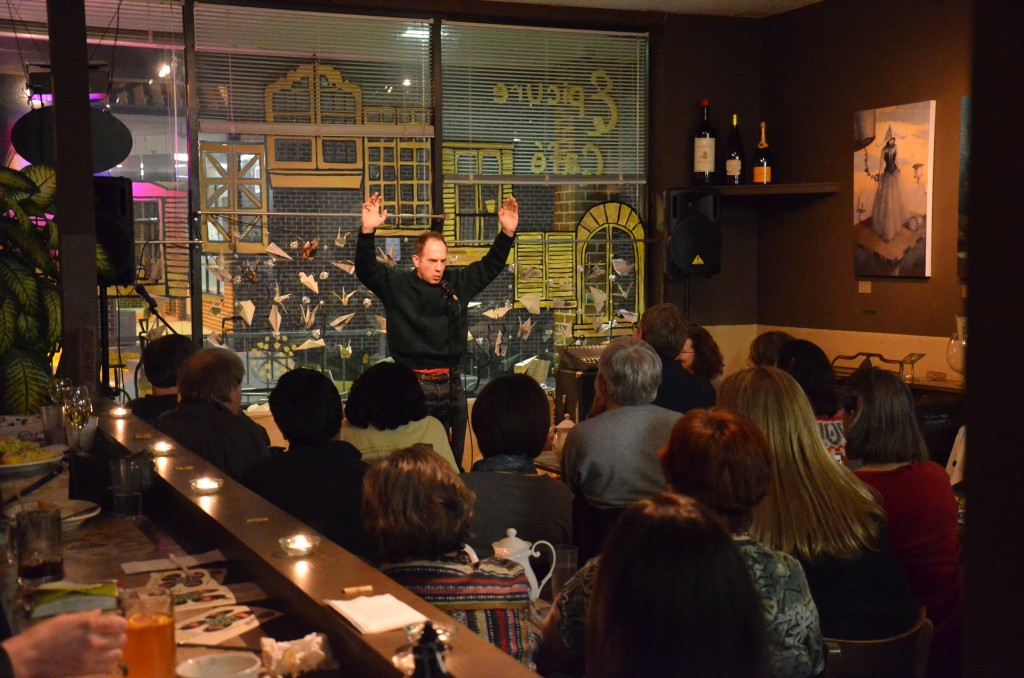 Some high school friends and I began writing a book back in the mid-90s about casual humor called “We’re So Serious about Comedy, It Isn’t Funny.” We’re still waiting to hear back from some publishers. We dissected all comedy into what we called The Four “C”s of Comedy. Those Four “C”s are Content, Context, Timing and Delivery.
Some high school friends and I began writing a book back in the mid-90s about casual humor called “We’re So Serious about Comedy, It Isn’t Funny.” We’re still waiting to hear back from some publishers. We dissected all comedy into what we called The Four “C”s of Comedy. Those Four “C”s are Content, Context, Timing and Delivery.
Seriously, if any of you know of any desperate publishing houses, let me know.
When stripped of nuance, expectation and all other spices, the only difference between storytelling and standup is in the content. It’s the difference between getting a tub of Legos and being told to make a bird and being told to make anything. While those given the latter instructions could certainly make a bird, is that really the funniest thing you could make? Why not make a horny toad? Or a platypus? Or why make anything at all? Maybe you could just line up the Legos one after another. Or just pile them into a scrap heap. Or throw one up in the air and just when the audience is reaching out their arms to catch it, you violently sidearm another one into the audience’s jaw.
As for the other group, there are a lot of different kinds of birds. Exotic birds like macaws and cockatoos and flightless birds like penguins and velociraptors, depending on whether you believe Jurassic Park. But the audience will know if you try to give them a giraffe with wings. Or if you take off the beak and sidearm it at their jaw.
If you justifiably did not keep up with this analogy, the “bird” represents structure. Storytelling has an expectation of a story – beginning, middle, end. Standup does not confine its performers to this structure, but certainly doesn’t forbid it. However, because of the desire to get as many laughs as possible in the standard standup five minutes, one-liners and anecdotal humor are usually the weapons of choice. For reasons I will delve into deeper in my dissection of the difference in audience, longer stories with character growth, plot development and more than 20 seconds between laugh lines is a good formula for a collective audience smoke break in the five minute standup format.
The other difference in content, and arguably the more intriguing element, is the expectation of truth. This has been a hotly contested topic within the storytelling community, in memoir critiques and in one-man performances, a.k.a. Mike Daisey’s The Agony and Ecstasy of Steve Jobs. How much exaggeration is too much exaggeration differs from show to show, person to person and minute to minute and is a shark-infested ocean I will not be rafting into right now.
The difference is obvious in execution. All material told on a standup stage is meant to be taken with a grain of salt. Phrases like “No joke” and “I’m not kidding” and “This seriously just happened to me on the drive here” are more often than not followed with a story that didn’t happen on the drive there. In this way, the standup world is much easier to write for. I had a story I told on the standup stage but had no real end to it so I just made one up. It’s an acceptable liberty granted to standup performers in the name of maximum laughter. I went to tell that story on the Speakeasy stage and had to instead figure out how to make the real ending interesting through philosophical exposition or a cock of the eyebrow or some other random guess.
With storytelling, sometimes you have to dress up the bird in fancy clothes or a hat or have it give the middle finger to the crowd, but the expectation of truth is not something to squaw at. The audience is there to see the birds. Give them a bird.
 Dustin Fisher is an amateur stand-up comedian, award-winning storyteller, freelance writer and stay-at-home dad, all of which are just nicer ways of saying “unemployed.” You can follow along with him, his daughter Mabel, and his newborn son Morris as they learn how to raise each other at http://daddyneedsanap.com/.
Dustin Fisher is an amateur stand-up comedian, award-winning storyteller, freelance writer and stay-at-home dad, all of which are just nicer ways of saying “unemployed.” You can follow along with him, his daughter Mabel, and his newborn son Morris as they learn how to raise each other at http://daddyneedsanap.com/.
His first memoir, Daddy Issues, is available in paperback, eBook, and Audiobook. Dustin has been published in the Huffington Post, The Good Men Project, Speakeasy DC blog, Baltimore Fishbowl, So Much Sports, Welter, Plorkology, and Baltimore STYLE Magazine. A list of his upcoming shows as well as a video archive can be found at http://dustinrecsports.com/.
Dustin lives in New Carrollton, MD with his wife Jennifer, daughter Mabel, son Morris, and one too many cats.


